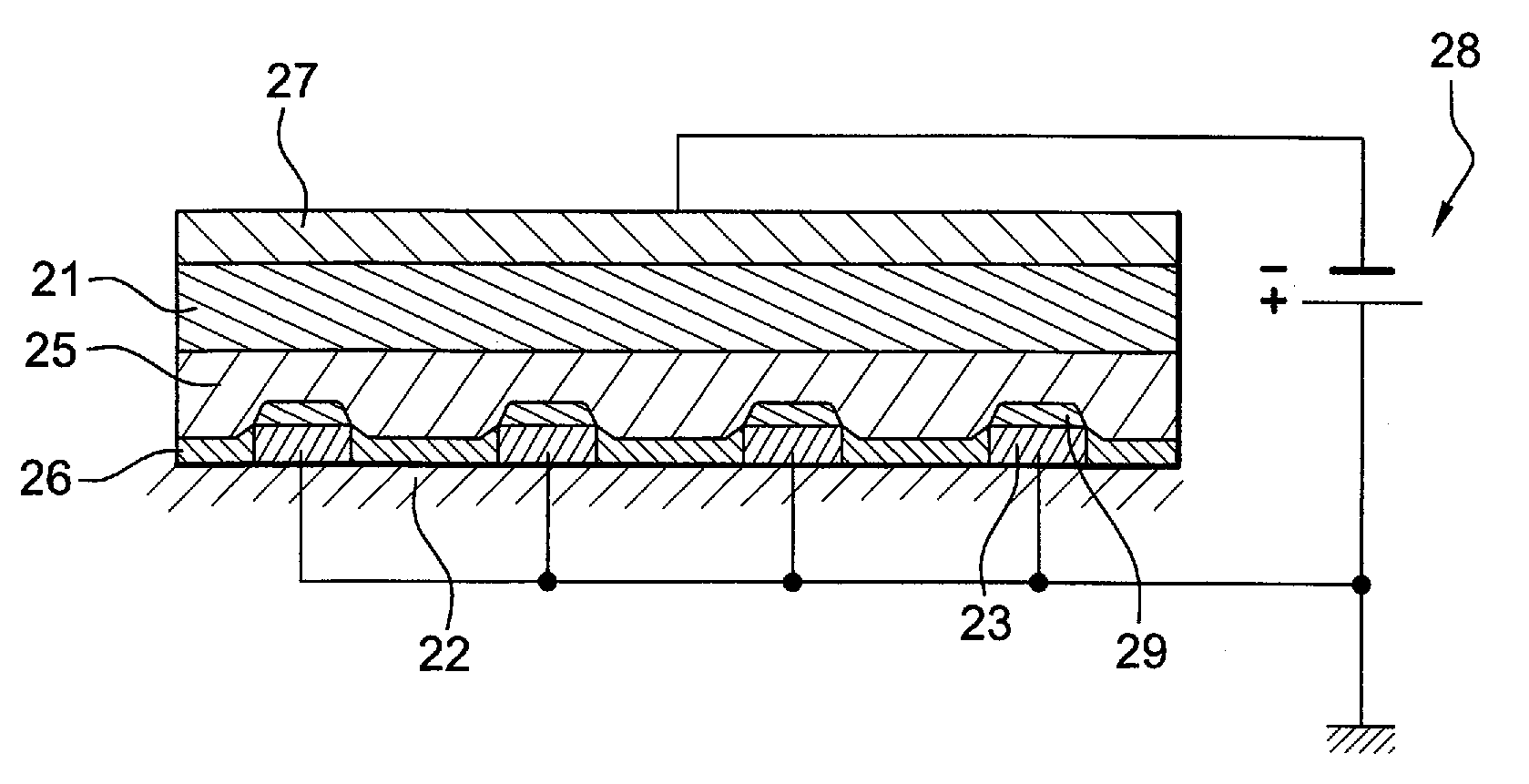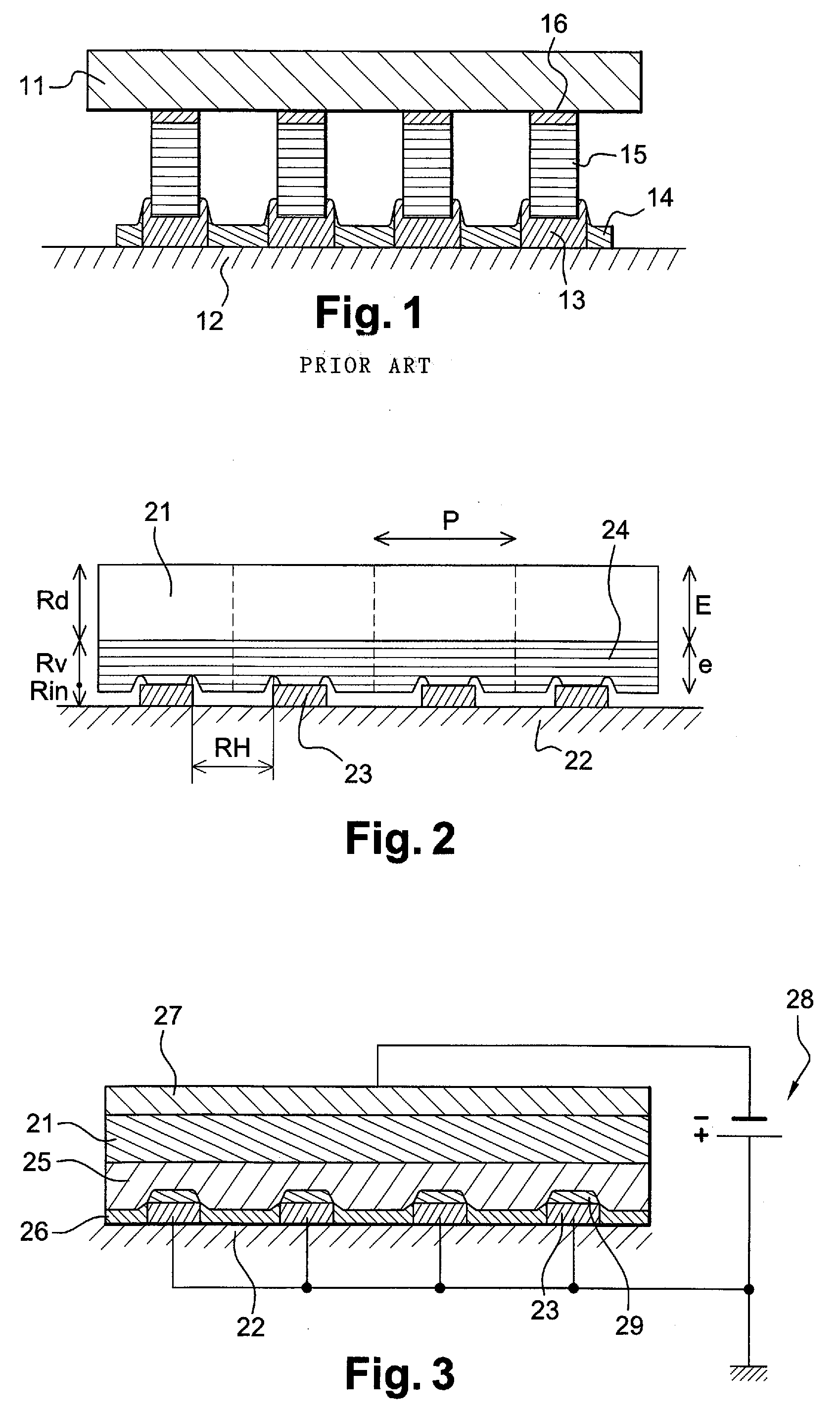Device for detecting electromagnetic radiation and ionizing radiation having an isotropic transfer layer
a technology of which is applied in the field of devices for detecting electromagnetic radiation and ionizing radiation, can solve the problems of reducing the ratio of coherent signal to undesirable noise, reducing the resolution and sensibility of the sensor operating according to this first principle, and reducing the resolution and sensibility of the sensor to low exposure dose. , to achieve the effect of simple, robust and efficient, and optimizing performan
- Summary
- Abstract
- Description
- Claims
- Application Information
AI Technical Summary
Benefits of technology
Problems solved by technology
Method used
Image
Examples
Embodiment Construction
[0056]FIG. 3 shows a device for detecting electromagnetic radiation and ionizing radiation according to the invention. In the present case, this device is more particularly intended for detecting X-rays or γ rays, but the present invention may also apply to the detection of electromagnetic radiation having different energy spectra or charged particles.
[0057]According to the invention, the sensor comprises a sensing layer 21 also called photodetector, consisting of one or more materials capable of interacting with the incident rays, in order to liberate mobile charge carriers. These mobile charge carriers may be electrons or holes, and therefore carry negative or positive charges.
[0058]In a manner known per se, the travel of these mobile charge carriers, under the action of a bias voltage 28, generates electric currents, of which the strength is representative of the energy deposited by the incident rays and, hence, of the scene observed.
[0059]After this direct conversion step in the...
PUM
 Login to View More
Login to View More Abstract
Description
Claims
Application Information
 Login to View More
Login to View More - R&D
- Intellectual Property
- Life Sciences
- Materials
- Tech Scout
- Unparalleled Data Quality
- Higher Quality Content
- 60% Fewer Hallucinations
Browse by: Latest US Patents, China's latest patents, Technical Efficacy Thesaurus, Application Domain, Technology Topic, Popular Technical Reports.
© 2025 PatSnap. All rights reserved.Legal|Privacy policy|Modern Slavery Act Transparency Statement|Sitemap|About US| Contact US: help@patsnap.com



